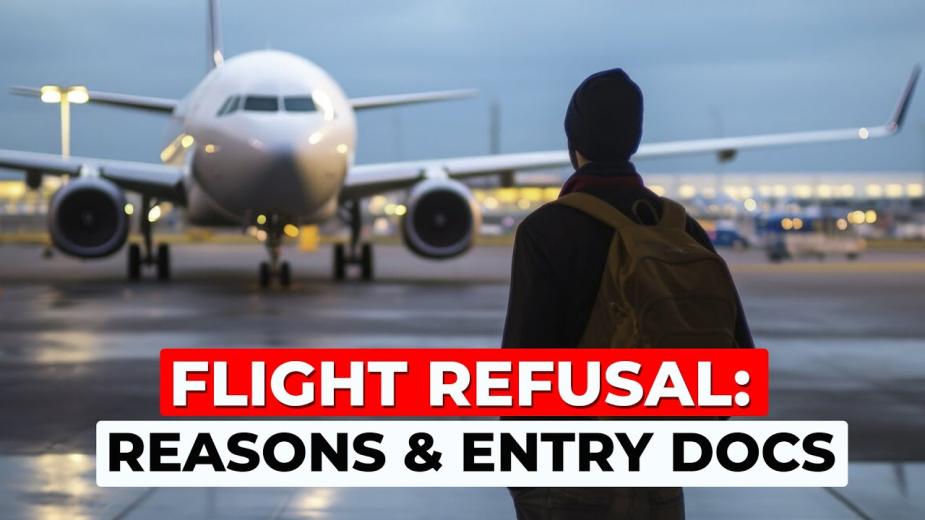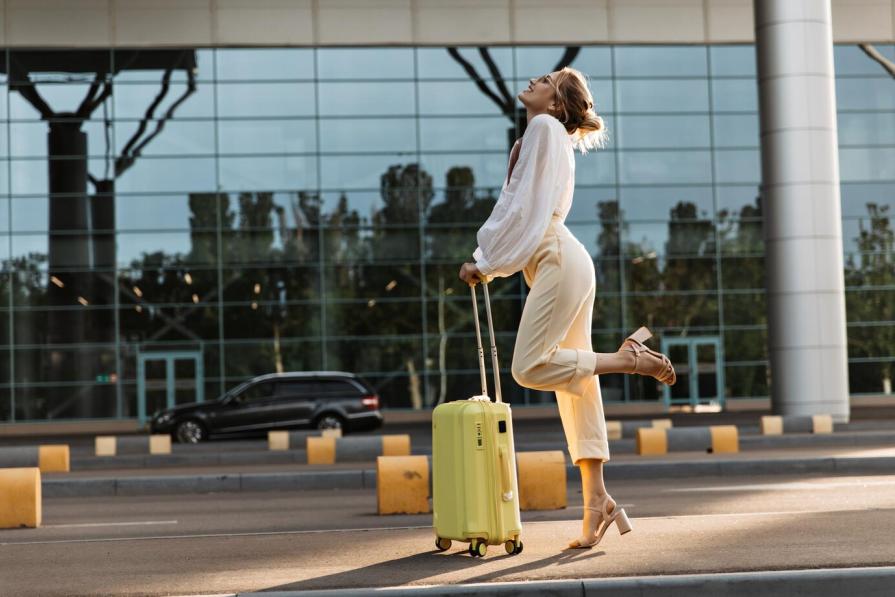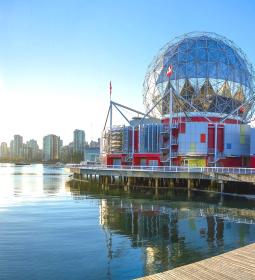Flying an airplane seems difficult only at first glance - a little preparation, attentiveness and knowledge of the nuances will help to avoid surprises. This guide will explain how to buy a ticket, what to expect at the airport, what documents to take and what to look for from different carriers.

Buying a ticket
The easiest way to look for tickets is on aggregator sites. They are convenient for quick selection, but do not always cover all available flights, so it is useful to look at the website of the airline itself and double-check, especially when it comes to large carriers.
It is easier to buy a ticket from the carrier if you need to change the dates or return the money.

What to pay attention to:
- Read reviews about intermediaries before buying a ticket.
- Carefully check the route, dates and return conditions.
- Check fees: Sometimes agencies sell tickets cheaper than airlines, but there may be additional fees.
If choosing between sites seems difficult, this algorithm is suitable:
- Make sure which airlines fly from the desired city using the schedule in services like "Flightradar24",
- Compare options through aggregators,
- For specific offers, check the prices on the websites of airlines and intermediaries.
Low-cost airlines vs traditional airlines
Low-cost carriers are attractive with low prices, but the "comfort" of the flight will correspond. If the flight is short, with little hand luggage, low-cost airlines can be a great option: for example, traveling without luggage in Europe or Asia with companies like Ryanair or AirAsia will save you a lot of money.
But if comfort, seat choice, or ticket flexibility are important, it's better to choose a "traditional" airline. This is especially true for long flights.
Remember, low-cost airlines often use remote airports, complicating logistics and adding costs to the final cost of the road.
Before you arrive at the airport

Before the flight, collect all the necessary documents in advance:
- Passport,
- Itinerary receipt: usually an electronic version is enough, but in some countries they require a paper one,
- Card used to pay for the ticket: it can be asked by airline employees,
- Cash: in dollars or euros to pay for visas or to verify financial solvency (optional).
For traveling with children, check the need for notarized consent if the child is not flying with a parent.
How to get to the airport
Transport to the airport varies by country. Commonly available:
- Buses: cheap but inconvenient with a lot of luggage,
- Trains or metro: it is optimal if the stop at the airport is nearby,
- Taxi and car sharing: more expensive, but more convenient.

Important: check the departure terminal in advance! At large airports, different terminals can be located kilometers apart.
Control and registration
Recommended time of arrival at the airport:
- Domestic flights: 2 hours in advance,
- International flights: 3 hours in advance,
For flights with increased security measures, arrive in advance!
Entrance control
In many countries, suitcases are checked before entering, so take out all equipment and liquids in advance, they must pass a separate check.
Check-in
It can be passed at the counter or through the machine. Check if you need to print your ticket. If you lose your boarding pass, it's okay, it can be restored through a kiosk or at the check-in counter, but some airlines may ask for an additional fee for this.

Hand luggage
Carry-on baggage is everything that is taken on board the plane. Unlike checked baggage, it travels with the passenger in the cabin. Each airline sets its own rules regarding dimensions and maintenance, and these requirements must be studied in advance to avoid trouble.
What can I carry in my hand luggage?
Permitted items include:
- Laptops, smartphones, cameras;
- Liquids with a volume of up to 100 ml per package (total volume - up to 1 liter); All liquids should be packed in a transparent bag.
What should not be brought into the cabin?
- Piercing and cutting objects (knives, nail scissors, corkscrews);
- Aerosols and sprays;
- Dangerous items, including weapons and their dummies;

The dimensions of hand luggage vary depending on the airline. Usually it is 55 × 40 × 25 cm and 5-10 kg, but low-cost airlines have stricter requirements. For clarification, you should study the itinerary receipt or information on the airline's website. Some carriers will force you to stuff your bag into a special calibrator - if it does not fit, you will have to check it in as luggage (and pay, accordingly).
What to do if you exceed the size or weight?
Hand luggage slightly exceeding the norm is often allowed on board for an additional fee, but if there is a significant discrepancy, it is checked in as baggage. If you have tickets without included luggage, then you will be obliged to pay this overspending, but tickets with included luggage space allow you to do without extra expenses.
Checked baggage
Checked baggage is something that cannot be taken into the cabin, it is transported in the baggage compartment of the aircraft. The allowances for this type of baggage also vary depending on the airline: for example, the allowed dimensions of a suitcase are usually up to 158 cm in the sum of three dimensions and a weight of up to 23 kg.
Before dropping off your baggage, you can protect it from damage. Packaging in plastic wrap costs money, but it can be replaced with a cover (reusable).
If there is an overweight, it can be compensated in various ways: extra pounds are distributed in the pockets of clothes, handed over to the mourners at the airport - or, sighing, paid for as excess baggage.
What can and cannot be transported?
It is allowed to put in the suitcase:
- Manicure scissors,
- Mercury thermometer,
- Liquids (including alcohol with a strength of up to 24%).

However, there are strict prohibitions. Among them:
- Lithium-ion batteries, including chargers and electric scooters;
- Alcohol is stronger than 70%;
- Explosives, including fireworks.
It is not always obvious what you can or cannot carry: you should check this point in the international databases of Timatic or on the websites of the customs authorities of the countries you plan to visit.
Non-standard baggage
Baggage weighing more than 32 kg and non-standard items, such as skis or snowboards, require prior approval from the airline. For infants, free conditions for the carriage of strollers or car seats are often provided. Some airlines include sports equipment in their free baggage allowance.
Pre-flight inspection
The pre-flight inspection begins with the presentation of the passport and boarding pass to the security officer. After checking the documents, the sorting of hand luggage begins.
If something is seized from you, be polite and calm: the thing can either be handed over to the storage room, or packed in luggage, if time allows.
Veterinary control
If you are traveling with pets, then here is a list of documents that you will definitely need:
- Veterinary passport with vaccination marks. Be sure to check the rabies vaccine: it must be no older than 12 months, but not "younger" than 20 days before departure!
- A microchip is mandatory for international flights. The chip is installed before vaccination, otherwise the mark in the passport will become invalid. The chip number is inscribed in the passport - without it, alas, they will not be allowed to go abroad.
- International certificate: the EU requires a European certificate, and exotic Egypt often asks for form No5a. Advice: specify which papers are needed in your direction!
How to transport a pet
- Each country has its own nuances: somewhere the import of certain types of animals is prohibited, and somewhere additional treatment against parasites will be required before the flight.
- Treatment for worms and fleas is mandatory for traveling abroad.
- Agree on the details with the carrier: specify the weight of the carrier and the permissible dimensions. As a rule, animals up to 8 kg (including a carrier) fly in the cabin, and larger passengers fly in the hold.
Passport control: regular and automatic
On international flights, you cannot avoid meeting with a border guard. Officers check the passport, sometimes ask questions. How to prepare?
- Make sure that the passport is free of covers and unnecessary attachments (for example, old tickets),
- Remember in advance the date of issue of the document or simple data about yourself - sometimes they are asked to make sure that you are really the owner of the passport.
Major airports have automatic passport control. The procedure is fast: attach your passport, look into the camera – you're done.
Dute-free
After passport control, there is a dute-free area at international airports, where there are duty-free shops, cafes and waiting rooms.
Food: you can have a snack in advance so as not to overpay - prices at the airport are usually 1.5-3 times higher than in the city. It is allowed to bring solid food with you: sandwiches, nuts, cookies, but drinks are only bought after inspection.
Lounge halls: comfortable waiting areas with sofas, free Wi-Fi, snacks. You can get there by paying for the entrance fee or using the privileges of a premium card.
In the duty-free zone, it is more profitable to buy alcohol, perfumes, cosmetics and chocolate. However, carefully study the customs restrictions of the country of arrival: for example, many places prohibit the import of alcohol in excess of the established norm, even if it is bought in duty-free.
Planting and gate
Boarding begins approximately 40-45 minutes before departure and ends 15-30 minutes, the exact time is indicated on the boarding pass.
To board the plane, you will have to go through another check at the boarding gate, where you will again present your passport and boarding pass.
Good to know:
- Follow the information on the scoreboard - the gate number may change.
- Access to the aircraft is provided through a sleeve, bus or on foot - check when boarding.
During the flight: comfort and rules of conduct
To make the flight pleasant, it is important to follow a few rules:
- Listen to the crew briefing before takeoff, do not ignore the seat belts.
- Put all devices in airplane mode.
- Do not try to get up or open the shelves while taxiing the aircraft – it is dangerous.

For comfort:
- Take a neck pillow, a sleep mask and earplugs.
- Bring wipes and sanitizer for hygiene.
Important: it is forbidden to smoke and drink alcohol on board. Violators may face fines or removal from the flight.
Transfers and connections: how to plan
For flights with transfers or connections, it is important to consider two points:
- Connection with a single ticket: the luggage will be reloaded themselves, you do not need to go through passport control. If the flight is delayed, the airline will provide a new ticket.
- Transfer with different tickets: here you will have to go through all the stages on your own, including baggage claim and drop-off. If the country is visa-based, a transit visa will be required.
Check the transit rules in advance and study the airport map - this will save time and nerves.
















